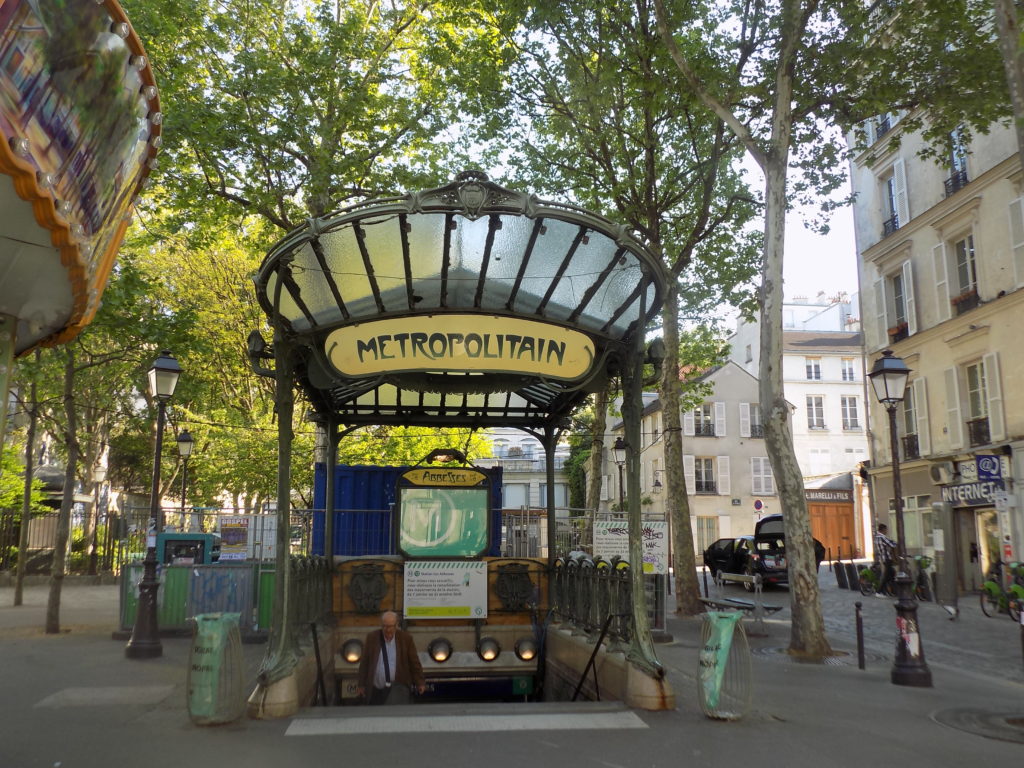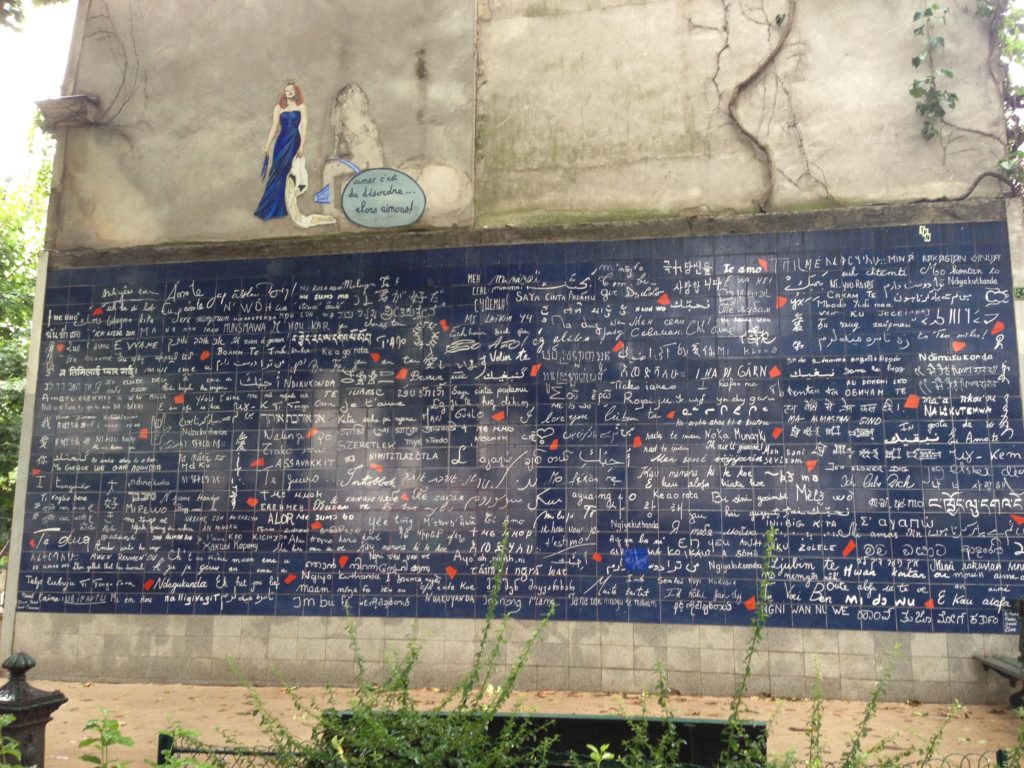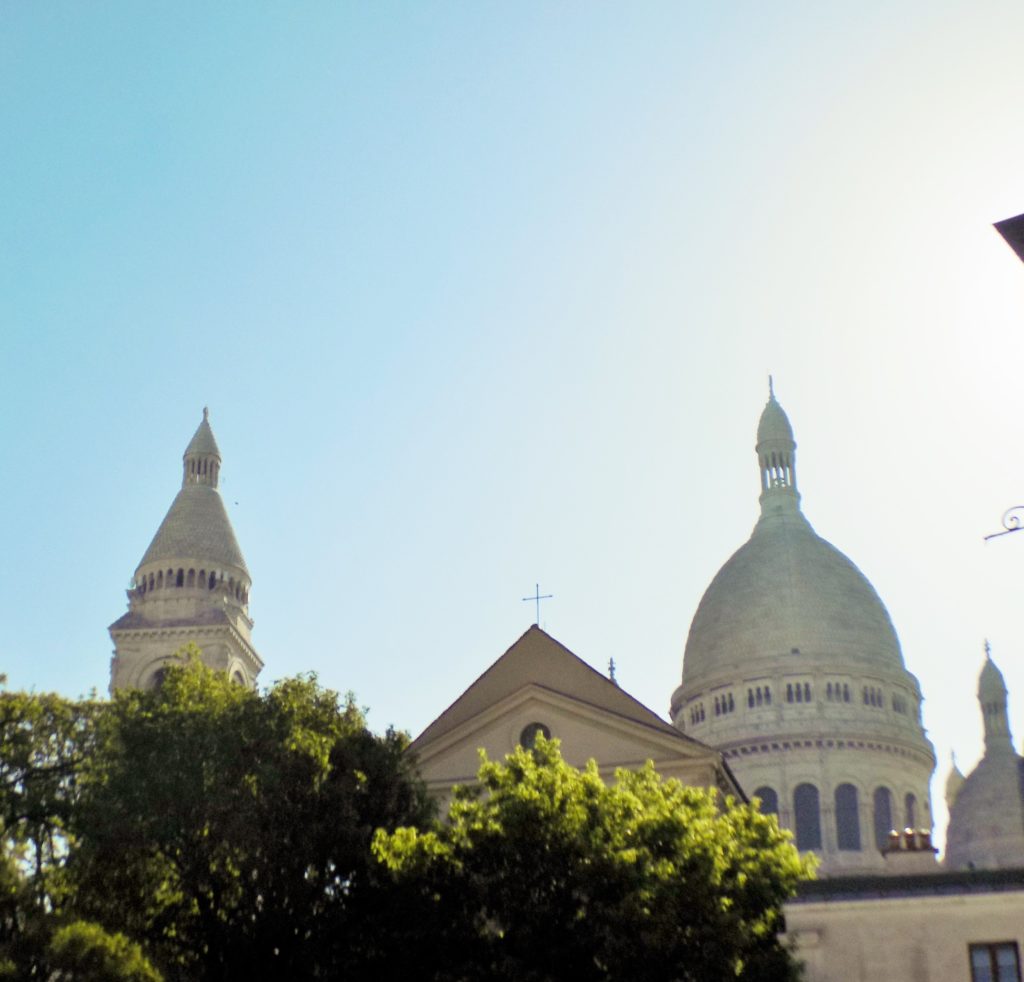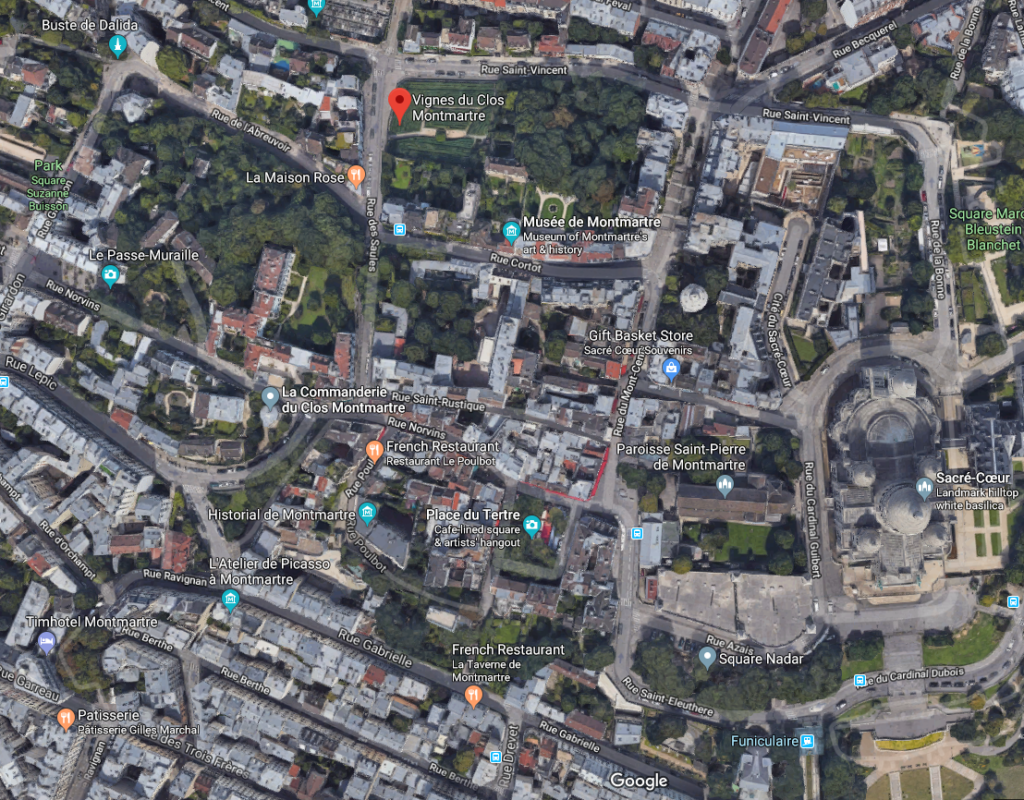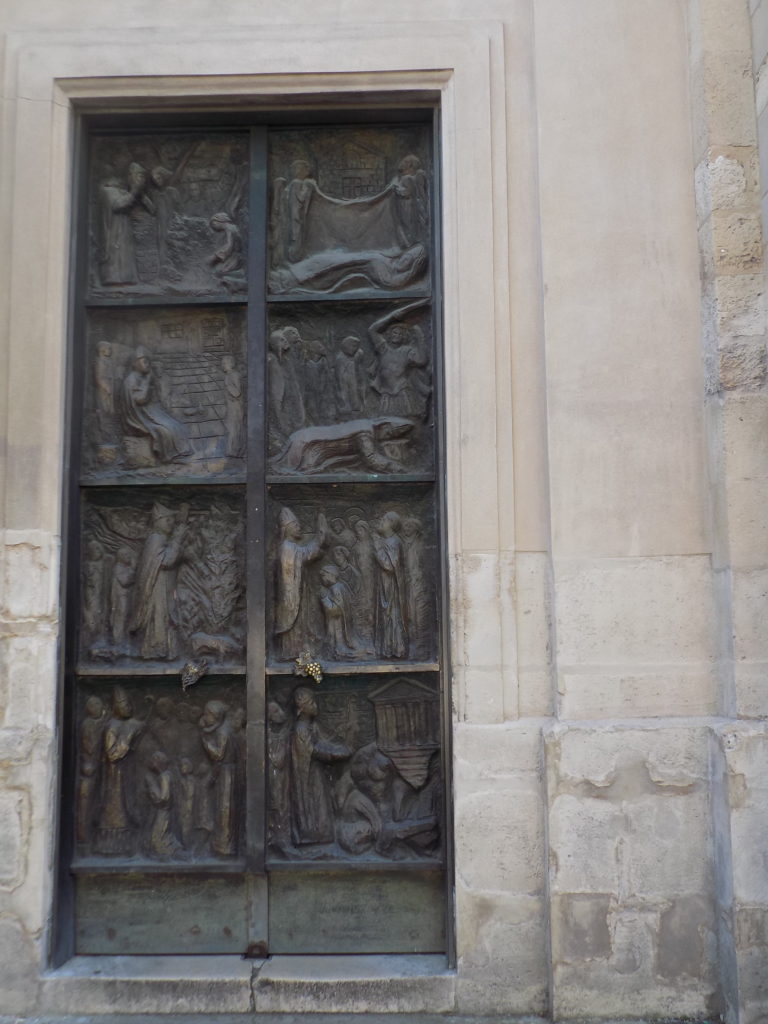Sometimes those of us in the over 60 set find it takes a few minutes longer to “Get your motor runnin’ and head out on the highway” than it did before entering life in our seventh decade or beyond. We can feel like we’re powered by diesel fueled engines on a January Minneapolis morning and if the combustion chambers in our joints aren’t properly heated, our engine blocks just might crack.
While I never know when to expect these days, that was certainly true for me and possibly Pat Saturday morning. In this case I think it was some residual tiredness held over from our long walks around le Marais and Père-Lachaise all day Friday and our failed attempt to see Franck at Chez Papa later that evening that generated the metaphorically cold weather and allowed a bit of Friday’s exhaustion to leak like oil onto the garage floor into Saturday morning.
We stumbled out of bed, fumbled around the apartment, listened to our grumbling joints, and took a bit too long getting dressed than we should have. The upshot was that we only partially succeeded in following the first bit of David’s advice which was to visit Montmartre early in the day.
David and Alison had also suggested that we might want to again ride the bus rather than the Métro because, as we had on our way to Père-Lachaise, we’d see more of Paris traveling above ground rather than under it. Given our later than anticipated start in combination with some of our other plans for the day, we chose speed over sights and rode the Métro.
The rest of their advice included having a bite of breakfast at Le Saint-Jean very near the Abbesses Métro station and a suggestion that we visit the Paroisse Saint-Pierre rather than the more famous Basilica of Sacré-Coeur. We followed both and, on reflection, I have a tiny regret that we hewed to that plan. (Tiny in the sense that the thought, “I probably should have done that while I was there” crossed my mind once or twice.)
Subway deep, Montmartre high.
It required just a single transfer to ride the Métro from the Saint-Paul stop outside our door to the Abbesses stop about two thirds of the way up the hill called Montmartre but that is officially named Butte Montmartre. (The truth is that at 36 meters underground, the Abbesses station is the deepest in the Paris Métro system so when you exit the train, you’re only about a third of the way up the 130 meter hill. When you reach the street the remaining ascent is about 45 meters.) The station entrance
is a classic art nouveau design.
The café Le Saint-Jean was just steps from the Métro – probably less than the width of either a football or ‘futbol’ field. Pat and I stopped in for our typical French petit-déjeuner – a croissant or bit of baguette with jam plus coffee for Pat and, of course, tea for me.
Before we started up the hill – David and Alison had told us that all uphill paths eventually led to both Saint-Pierre and Sacré-Coeur – I wanted to be certain we stopped at Le mur des je t’aime or the I Love You Wall.
[This photo is from Pinterest. The photos I took were too dappled by shadow and sunlight to be of any real value showing the true appearance of the work.]
The wall, which is also just steps from Abbesses is in the Square Jehan Rictus, is the creation of Frédéric Baron and Claire Kito. (Rictus was a late 19th and early 20th-century poet.) There are 612 square enameled lava tiles with “I love you” written 311 times in 250 languages on the 40 square meter space. I couldn’t discover the work’s creation date nor could I learn whether the image of Rita Hayworth and the somewhat shadowy figure to her right are part of Baron and Kito’s installation or unrelated to it. Google translates the expression in the bubble as, “Love is love then disorder.”
From there, we began our somewhat leisurely meander up the hill and it was truly a meander. We stopped when we wanted and turned onto any side street that looked interesting while always remaining cognizant that we should continue ascending. And when Sacré-Coeur at last came into view
it confirmed that the only relevant direction was, indeed, up. But before completing our ascent to the highest point in Paris, we wound our way to the
Paroisse Saint-Pierre.
As I write this account several weeks after the end of my journey with some time to reflect on the experience, I’ve come to the realization that my new Parisian pal David, despite being an American in Paris, has the same natural inclination to prefer antiquity, tradition, and perhaps even a bit of nostalgia that seems somehow inherently French. This, I believe, is the main reason he promoted stopping at Saint-Pierre over visiting Sacré-Coeur.
The first church of Saint-Pierre was built by the order of Louis VI and his wife Adèle de Maurienne to replace a Merovingian Church that had previously occupied the site. Its construction began in 1134 and the church was consecrated in 1147 by Pope Eugene III at what was said to have been an impressive ceremony attended by Saint Bernard of Clairvaux and the Abbot of Cluny, Peter the Venerable. It’s also worth noting that, according to the first biography of Saint Ignatius of Loyola, it was at Saint-Pierre that he took the vows that led to his establishment of the Society of Jesus (aka Jesuits). All this makes the church a significant location in Catholic history.
The church shared a parcel of 13 hectares with the Abbey of Montmartre that included a garden and vineyards. The abbess and founder of the nunnery was Adelaide de Savoie – the mother of Louis VI. It was she who exercised control over those more commercial aspects of the complex. All that remains of the Montmartre Abbey are the vineyards which you can see marked by the red pin in this satellite photo from Google Maps. If you look diagonally toward the lower right corner, you’ll see Paroisse Saint-Pierre and Sacré-Coeur.
Although there may be some remnants of the original building, the church we see today isn’t the one that was built in the twelfth century. Most of that structure was destroyed during the French Revolution. The church that occupies the spot today was restored in the late eighteenth and early nineteenth centuries. The brass doors that so impressed me were added in 1980.
The interior of the church is highlighted by its contemporary stained-glass windows which were created by the master twentieth-century stained glass window maker Max Ingrand in the 1950’s. (You can see some excellent photos of the windows here.) It’s undergoing a lighting project aimed at highlighting and preserving the disparate interior elements.
Certainly, I appreciate David and Alison alerting us to this church that we would have otherwise passed by even if, after stopping there, I failed to identify the Roman columns in the nave as particularly Roman or even appearing Roman. It was a lovely stop – for a church. It’s also something of a refuge from the burgeoning bustle that escalates its envelopment of Montmartre as the day progresses.
